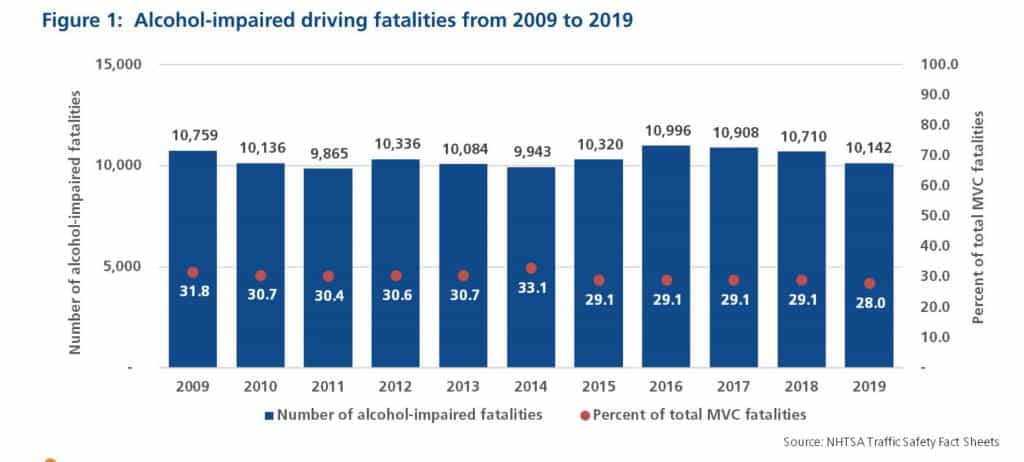
he overall fatality rate has decreased consistently for the past three years from a high in 2016, according to the National Highway Traffic Safety Administration (NHTSA). A 5.3% decrease was observed from 10,710 in 2018 to 10,142 in 2019, meaning hundreds of lives were saved during this period. The percent of alcohol-impaired driving fatalities of all driving fatalities in 2019 represents the lowest percentage since the beginning of data collection on alcohol in 1982.
Carl Wicklund, TIRF USA senior research advisor is encouraged with this trend, noting, “The percentage of respondents reporting driving when they thought they were over the legal limit in the last 12 months decreased significantly from 20% in 2019 to 16.6% in 2020.” This reduction may indicate a greater awareness of the impairing effects of alcohol.
Results of this RSM also show concern about alcohol-impaired driving remained high and was equal to concern about the COVID-19 pandemic. Approximately 3 in 5 (60%) Americans reported they were very or extremely concerned about the pandemic. Comparatively, 60% of U.S. drivers reported they were very or extremely concerned about alcohol-impaired driving. In addition, 81% of U.S. drivers consider alcohol-impaired driving a serious problem, a significant increase from 78% in 2019.
“Despite this high level of concern about alcohol-impaired driving, many still reported driving when they thought they were over the legal limit and doing so often,” cautions Heather Woods-Fry, Research Scientist of TIRF Canada and lead author of the study. “The primary reason for drivers reporting this behavior was they believed they were okay to drive. This indicates continued education efforts are essential to maintain awareness about the impairing effects of alcohol.” The poll also revealed 11.9% of drivers thought there was no alternative to driving compared to 9.6% in 2019.
Regarding the impact of the COVID-19 pandemic on driver behavior, while most drivers didn’t change their behavior or were less likely to take risks during the pandemic, a small proportion of drivers indicated they were more likely to engage in risky behavior. Results show:
- 7.6% were more likely to drive after drinking during the pandemic
- 7.6% were also more likely to speed during the pandemic
- 7.1% were less likely to wear their seatbelt during the pandemic
Survey results also show the proportion of respondents that indicated they had been a designated driver, used a designated driver, used a taxi or public transportation or ridesharing decreased from 82.3% in 2019 to 75.7% in 2020.
The full impact of the COVID-19 pandemic on road safety is presently unknown but it may require adjusting educational and law enforcement strategies to address alcohol-impaired driving according to these survey results.
“The decrease in the percentage of drivers stating they relied on safe rides as an alternative strategy to avoid alcohol-impaired driving is concerning. As an increasing amount of resources are being focused on the health of Americans during the pandemic, targeted education and enforcement efforts to reduce and prevent impaired driving are essential to lessen the burden of the issue, especially in light of the current road safety climate,” concludes Woods-Fry.